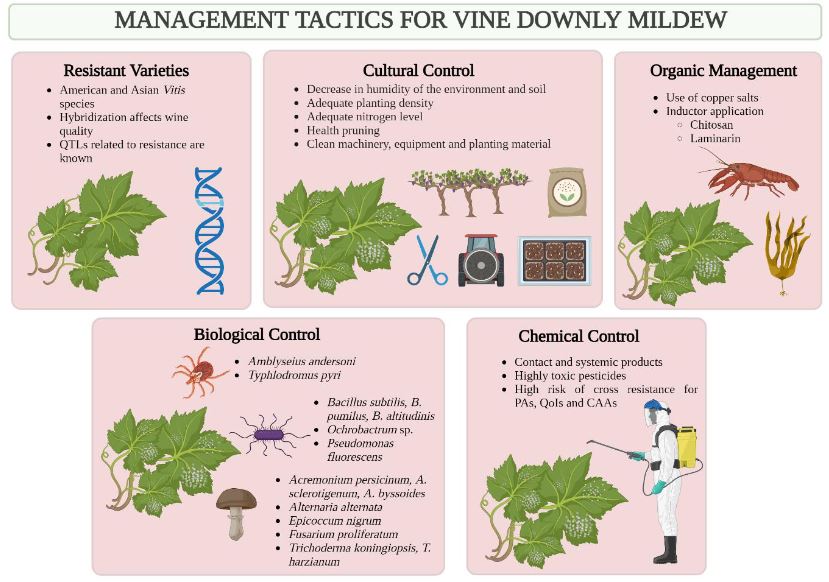Article filters
Search Papers
Current situation of viticulture in Costa Rica and management strategies for downy mildew (Plasmopara viticola)
By Daniel Castrillo Sequeira, Rodrigo Jiménez Robles, Milagro Granados Montero*
* Corresponding Author. Email: - / Institution: Universidad de Costa Rica
Accepted: 10/December/2023 – Published: 27/December/2023 – DOI: https://doi.org/10.18781/R.MEX.FIT.2309-3
Abstract Viticulture is one of the oldest agricultural activities, and its exploitation has traditionally been limited to temperate climate zones, where the european grapevine (Vitis vinifera) and wine originate. Given the effects of climate change, more areas lose the capacity to grow this crop, and the tropics are presented as potential regions for this market. In Costa Rica, viticultural activity has been reported since the mid20th century, however, technical information on the crop is scarce. Downy mildew, caused by the oomycete Plasmopara viticola, represents one of the diseases with the greatest economic impact for viticulture worldwide, as well as the most limiting phytosanitary problem in Costa Rica. Under high humidity conditions, the development of the pathogen is accelerated, and the host remains susceptible throughout the crop cycle, which makes proper management of epidemics difficult. Chemical control is the most common management strategy around the world, however, the appearance of P. viticola populations with resistance to fungicides has been observed in most grape vine-growing areas, hence the search for more ecological alternatives is a necessity. Currently, Costa Rica does not have integrated management strategies that allow sustainable production, and there is only one registered product for protection against this pathogen. This situation justifies paying more attention to the investigation of this pathosystem
Keywords: Vitis vinifera, tropical viticulture, oomycete, disease management












